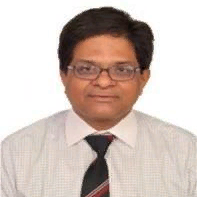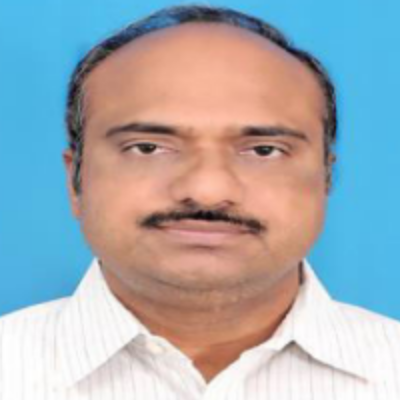International Journal of Image, Graphics and Signal Processing (IJIGSP)
IJIGSP Vol. 10, No. 9, 8 Sep. 2018
Cover page and Table of Contents: PDF (size: 1348KB)
A Robust Zonal Fractal Dimension Method for the Recognition of Handwritten Telugu Digits
Full Text (PDF, 1348KB), PP.42-55
Views: 0 Downloads: 0
Author(s)
Index Terms
Indian languages, zones, Fractal dimension and Feed forward backward propagation neural network
Abstract
Recognition of handwritten digits is most challenging sub task of character recognition due to various shapes, sizes, large variation in writing styles from person to person and also similarity in shapes of different digits. This paper presents a robust Telugu language handwritten digit recognition system. The Telugu language is most popular and one of classical languages of India. This language is spoken by more than 80 million people. The proposed method initially performs preprocessing on input digit pattern for removing noise, slat correction, size normalization and thinning. This paper divides the preprocessed Telugu handwritten digits into four differential zones of 2x2, 3x3, 4x4 and 6x6 pixels and extracts 65 features using Fractal dimension (FD) from each zone. The proposed zonal fractal dimension (ZFD) method uses, Feed forward backward propagation neural network (FFBPNN) for classifying the digits with learning rate of 0.01 and sigmoid function as an activation function on extracted 65 features. This paper evaluated the efficiency of the proposed method based on 5000 Telugu handwritten digit samples, each consists of ten digits from different groups of people and totally 50,000 samples. The performance of classification of the proposed method also evaluated using statistical parameters like recall, precision, F-measure and accuracy.
Cite This Paper
MSLB. Subrahmanyam, V. Vijaya Kumar, B. Eswara Reddy, " A Robust Zonal Fractal Dimension Method for the Recognition of Handwritten Telugu Digits", International Journal of Image, Graphics and Signal Processing(IJIGSP), Vol.10, No.9, pp. 42-55, 2018. DOI: 10.5815/ijigsp.2018.09.06
Reference
[1]C.H. The, R.T. Chin, “On image analysis by the methods of moments”, IEEE Trans. Pattern Anal. Mach. Intell. 10 (1988) 496–513.
[2]A.L. Koerich, “Unconstrained handwritten character recognition using different classification strategies”, in: Proceedings of International Workshop on Artificial Neural Networks in Pattern Recognition, 2003.
[3]L.S. Oliveira, R. Sabourin, F. Bortolozzi, C.Y. Suen, “Automatic recognition of handwritten numerical strings: a recognition and verification strategy”, IEEE Trans. Pattern Recogn. Mach. Intell.24 (11) (2002) 1438–1454.
[4]S. Impedovo, F.M. Mangini, G. Pirlo, “A new adaptive zoning technique for handwritten digit recognition”, in: ICIAP, 2013.
[5]F.M. Mangini, G. Pirlo, “Adaptive zoning design by supervised learning using multi-objective optimization”, Int. J. Comput.Intell. Appl. 13 (01) (2014).
[6]D. Impedovo and G. Pirlo, “Zoning methods for handwritten character recognition: A survey”,‖ Pattern Recognit., vol. 47, no. 3, pp. 969–981, 2014.
[7]C.L. Liu, “Normalization-cooperated gradient feature extraction for handwritten character recognition”, IEEE Trans. Pattern Anal. Mach. Intell. 29 (8) (2007).
[8]C.L. Liu, C.Y. Suen, “A new benchmark on the recognition of handwritten Bangla and Farsi numeral characters”, Pattern Recogn. 42 (2009) 3287–3295.
[9]Trier, O.D., Jain, A.K., Taxt, T.: “Feature extraction methods for character recognition – a survey”, Pattern Recognition., 1996, 29, (4), pp. 641–662.
[10]Shi, M., Fujisawa, Y., Wakabayashi, T., Kimura, F.: “Handwritten numeral recognition using gradient and curvature of gray scale image”, Pattern Recognit., 2002, 35, (10), pp. 2051–2059.
[11]Jain, A.K., Duin, R.P.W., Mao, J.,“Statistical pattern recognition: a review”, IEEE Trans. Pattern Anal. Mach. Intell., 2000, 22, (1), pp. 4–37.
[12]Yang, M., Kidiyo, K., Ronsin, J.: “A survey of shape feature extraction techniques”,in Yin, P. (Ed.): ‘Pattern recognition techniques, technology and applications’, 2008, pp. 43–90.
[13]Liu, C., Nakashima, K., Sako, H., Fujisawa, H.: “Handwritten digit recognition:benchmarking of state-of-the-art techniques”, Pattern Recognit., 2003, 36, (10),pp. 2271–2285.
[14]Shridhar, M., Badreldin, A., “High accuracy character recognition algorithm using Fourier and topological descriptor”, Pattern Recognit., 1984, 17, (5), pp. 515–524.
[15]Mahmoud, S.A., “Arabic character recognition using Fourier descriptors and character contour encoding”, Pattern Recognit., 1994, 27, (6), pp. 815–824.
[16]Bourbakis, N.G., Gumahad, A.T., “Knowledge based text character recognition using Fourier transform”. Proc. Second Int. IEEE Conf. on Artificial Intelligence, 1990, pp. 571–576.
[17]Mutelo, R.M., Woo, W.L., Dlay, S.S., “Discriminant analysis of the two-dimensional Gabor features for face recognition”, IET Comput. Vis., 2008, 2,(2), pp. 37–49.
[18]Whichello, A.P., Yan, H., “Reconstruction of character skeletons using Gabor filter features”, Electron. Lett., 1995, 31, (22), pp. 1911–1912.
[19]Hamamoto, Y., Uchimura, S., Watanabe, M., Yasuda, T., Tomita, S., “A Gabor filter-based method for recognizing handwritten numerals”, Pattern Recognit.,1998, 31, (4), pp. 395–400.
[20]Huo, Q., Ge, Y., Feng, Z.-D., “High performance Chinese OCR based on Gabor features, discriminative feature extraction and model training”. Proc. ICASSP, Utah, 2001, vol. 3, pp. 1517–1520.
[21]Wang, X., Ding, X., Liu, C.”Optimized Gabor filter based feature extraction for character recognition”. Proc. 16th ICPR, Quebec, Canada, 2002, vol. 4, pp. 223–226.
[22]Liu, C., Koga, M., Fujisawa, H., “Gabor feature extraction for character recognition: comparison with gradient feature”. Proc. Eighth Int. Conf. on Document Analysis and Recognition, 2005, vol. 1, pp. 121–125.
[23]Bhattacharya, U., Chaudhuri, B.B., “Handwritten numeral databases of Indian scripts and multistage recognition of mixed numerals”, IEEE Trans. Pattern Anal. Mach. Intell., 2009, 31, (3), pp. 444–457.
[24]Mowlaei, A., Faez, K., Haghighat, A.T., “Feature extraction with wavelet transform for recognition of isolated handwritten Farsi/Arabic characters and numerals”. Proc.14th Int. Conf. on Digital Signal Processing, 2002, vol. 2, pp. 923–926.
[25]Huang, L., Huang, X.,”Multiresolution recognition of offline handwritten Chinese characters with wavelet transform”. Proc. Sixth Int. Conf. Document Analysis and Recognition, Seattle, 2001, pp. 631–634.
[26]Kunte, R.S., Samuel, R.D.S., “Script independent handwritten numeral Recognition”. Proc. IET Int. Conf. VIE, Bangalore, 2006, pp. 94–98.
[27]F.A. Al-Omari, O. Al-Jarrah, “Handwritten Indian numerals recognition system using probabilistic neural networks”, Adv Eng. Inform. 18 (2004) 9–16.
[28]Y. LeCun and Y. Bengio, “Word-level training of a handwritten word recognizer based on convolutional neural networks,” in International Conference on Pattern Recognition, 1994, p. 88-92.
[29]S. Basu, N. Das, R. Sarkar, M. Kundu, M. Nasipuri, and D. K. Basu, “An MLP based Approach for Recognition of Handwritten `Bangla‟ Numerals,” pp. 407–417, Mar. 2012.
[30]A.de s.britto Jr, R. Sabourin, F. Bortolozzi, and C. Y. Suen, “The recognition of handwritten numeral strings using a two-stage HMM-based method,” Int. J. Doc. Anal. Recognit., vol. 5, no. 2–3, pp. 102–117, 2003.
[31]A. Vinciarelli, S. Bengio, and H. Bunke, “Offline recognition of unconstrained handwritten texts using HMMs and statistical language models.,” IEEE Trans. Pattern Anal. Mach. Intell., vol. 26, no. 6, pp. 709–20, Jun. 2004.
[32]Abdelhak Boukharouba, Abdelhak Bennia “Novel feature extraction technique for the recognition of handwritten digits” Saudi Computer Society, King Saud University, Applied Computing and Informatics (2017) 13, 19–26 .
[33]Ritesh Sarkhel, Nibaran Das, Aritra Das, Mahantapas Kundu, Mita Nasipuri, “A Multi-scale Deep Quad Tree Based Feature Extraction Method for the Recognition of Isolated Handwritten Characters of popular Indic Scripts” , Pattern Recognition (2017), doi: 10.1016/j.patcog.2017.05.022.
[34]Ritesh Sarkhel, Nibaran Das, Amit K. Saha and Mita Nasipuri, “A multi-objective approach towards cost effective isolated handwritten Bangla character and digit recognition”, Pattern Recognition, http://dx.doi.org/10.1016/j.patcog.2016.04.010.
[35]Kalyan Sourav Dash, Niladri B. Puhan, Ganapati Panda, “Handwritten numeral recognition using non-redundant Stockwell transform and bio-inspired optimal zoning” IET Image Process., 2015, Vol. 9, Iss. 10, pp. 874–882, doi: 10.1049/iet-ipr.2015.0146 www.ietdl.org
[36]D. Impedovo, D. Impedovo “Zoning methods for handwritten character recognition: A survey” Pattern Recognition (2013), http://dx.doi.org/10.1016/j.patcog.2013.05.021i.
[37]Ehsan Mohebi, Adil Bagirov, “A convolutional recursive modified Self Organizing Map for handwritten digits recognition” Neural Networks 60 (2014) 104–118, http://dx.doi.org/10.1016/j.neunet.2014.08.001.
[38]Kalyan S Dash, N. B. Puhan and Ganapati Panda, “A Hybrid Feature and Discriminant Classifier for High Accuracy Handwritten Odia Numeral Recognition” 978-1-4799-2027-3/14/$31.00 ©2014 IEEE.
[39]Thomas Deselaers, Tobias Gass, Georg Heigold, and Hermann Ney “Latent Log-Linear Models for Handwritten Digit Classification” Ieee Transactions On Pattern Analysis And Machine Intelligence, VOL. 34, NO. 6, JUNE 2012.
[40]Nibaran Das, Ram Sarkar, Subhadip Basu, Mahantapas Kundu, Mita Nasipuri, Dipak Kumar Basu, “A genetic algorithm based region sampling for selection of local features in handwritten digit recognition application” Applied Soft Computing 12 (2012) 1592–1606, doi:10.1016/j.asoc.2011.11.030.
[41]Nibaran Das, Jagan Mohan Reddy, Ram Sarkar, Subhadip Basu, Mahantapas Kundu, Mita Nasipuri,Dipak Kumar Basu “A statistical–topological feature combination for recognition of handwritten numerals” Applied Soft Computing 12 (2012) 2486–2495, doi:10.1016/j.asoc.2012.03.039.
[42]Xiao-Xiao Niu n, ChingY.Suen, “A novel hybrid CNN–SVM classifier for recognizing handwritten digits” Pattern Recognition 45 (2012) 1318–1325, doi:10.1016/j.patcog.2011.09.021.
[43]Gholam Ali Montazer a,*, Hamed Qahri Saremi b, Vahid Khatibi a,” A neuro-fuzzy inference engine for Farsi numeral characters recognition” Expert Systems with Applications 37 (2010) 6327–6337, doi:10.1016/j.eswa.2010.02.088.
[44]Akhilesh Pandey Amresh Kumar 3. Rajiv Kumar ,”Handwritten Devanagri Number Recognition using Majority Voting Scheme”, International Journal of Computer Science and Information Technology & Security (IJCSITS), ISSN: 2249-9555 Vol. 2, No.3, June 2012.
[45]V. Rajashekararadhya,Dr P.Vanaja Ranjan ,”Handwritten Numeral/Mixed Numerals recognition of South-Indian scripts: The zone based feature extraction method”, Journal of Theoretical and Applied Information Technology.
[46]Benne R.G.1, Dhandra B.V.1 and Mallikarjun Hangarge ,”Tri-scripts handwritten numeral recognition: a novel approach”, Advances in Computational Research, ISSN: 0975–3273, Volume 1, Issue 2, 2009, pp-47-51.
[47]B.V.Dhandra, R.G.Benne, Mallikarjun Hangarge ,”Kannada, Telugu and Devanagari Handwritten Numeral Recognition with Probabilistic Neural Network:A Novel Approach”, IJCA Special Issue on “Recent Trends in Image Processing and Pattern Recognition”2010.
[48]S. M. Mali ,”Moment and density based handwritten Marathi numeral recognition”,, Indian Journal of Computer Science and Engineering (IJCSE) Vol. 3 No.5 Oct-Nov 2012.
[49]S. M. Mali ,”Multiple Feature Extraction Methods for Handwritten Marathi Numeral Recognition”, International Journal of Engineering Research & Technology (IJERT) Vol. 2 Issue 10, October – 2013.
[50]G. G. Rajput, Rajeswari Horakeri, Sidramappa Chandrakant ,”Printed and Handwritten Mixed Kannada Numerals Recognition Using SVM”, International Journal on Computer Science and Engineering Vol. 02, No. 05, 2010, 1622-1626.
[51]Vishweshwarayya C. Hallur, Avinash A. Malawade, Seema G. Itagi ,”Survey on Kannada Digits Recognition Using OCR Technique”, International Journal of Advanced Research in Computer Engineering & Technology (IJARCET) Volume 1, Issue 10, December 2012.
[52]Gita Sinha, Anita Rani, Prof. Renu Dhir, Mrs. Rajneesh Rani ,”Zone-Based Feature Extraction Techniques and SVM for Handwritten Gurmukhi Character Recognition”, International Journal of Advanced Research in Computer Science and Software Engineering Volume 2, Issue 6, June 2012.
[53]Shivanand Killedar, Satish Deshapande ,”Kannada Handwritten Numerals Recognition and Translation Using Template Matching”, International Journal on Recent Technologies in Mechanical and Electrical Engineering (IJRMEE) ISSN: 2349-7947 Volume: 2 Issue: 6 2015.
[54]Suneetha , G. Hemantha Kumar ,Narendra R ,”Handwritten Numeral Recognition using Local Intensity Order Pattern of Popular South Indian Scripts”, International Journal of Latest Research in Engineering and Technology (IJLRET) ISSN: 2454-5031 Volume 02 - Issue 05 || May 2016 || PP. 41 – 44.
[55]Pratibha Singh, Ajay Verma and Narendra S. Chaudhari,” Reliable Devanagri Handwritten Numeral Recognition using Multiple Classifier and Flexible Zoning Approach”, I.J. Image, Graphics and Signal Processing, 2014, 9, 61-68, Published Online August 2014 in MECS (http://www.mecs-press.org/), DOI: 10.5815/ijigsp.2014.09.08.
[56]M. A. H. Akhand, Mahtab Ahmed and M. M. Hafizur Rahman, “ Convolutional Neural Network based Handwritten Bengali and Bengali-English Mixed Numeral Recognition”, I.J. Image, Graphics and Signal Processing, 2016, 9, 40-50, Published Online September 2016 in MECS (http://www.mecs-press.org/), DOI: 10.5815/ijigsp.2016.09.06.
[57]M. Radhika Mani, R. Kavitha Lakshmi ,”An Approach for Telugu Numeral Recognition by Moment Invariants in Wavelet Transform Domain”, International Journal of Innovative Research in Computer and Communication Engineering Vol. 1, Issue 8, October 2013.
[58]Ch. N. Manisha, E. Sreenivasa Reddy, Y.K. Sundara Krishna ,”A Study on Recognition Methods of Telugu Numerals and Characters”, International Journal of Emerging Technology in Computer Science & Electronics (IJETCSE) ISSN: 0976-1353 Volume 11 Issue 5 –NOVEMBER 2014.
[59]J . Jyothi, K. Manjusha, M. Anand Kumar and K. P. Soman ,”Innovative Feature Sets for Machine Learning based Telugu Character Recognition”, Indian Journal of Science and Technology, Vol 8(24), DOI: 10.17485/ijst/2015/v8i24/79996, September 2015.
[60]C.V.Chakradhar, 2 B.Rajesh, 3 M.Raghavendra Reddy ,”A Study on online Handwritten Telugu Character Recognition”, International Journal of Science, Engineering and Technology Research (IJSETR) Volume 5, Issue 7, July 2016.
[61]U Ravi Babu1 Y V V Satyanarayana2 S. Marthu Perumal ,”Printed Telugu Numeral Recognition based on Structural, Skeleton and Water Reservoir Features”, International journal of computers & technology, Vol 10, No 7 2013.
[62]Nobuyuki Otsu (1979). "A threshold selection method from gray-level histograms". IEEE Trans. Sys., Man., Cyber. 9 (1): 62–66. doi:10.1109/TSMC.1979.4310076.
[63]T.Y. Zang and C.Y. Suen, “A fast parallel algorithm for thinning digital patterns”, Comm. ACM 27 (3) (1984) 236-239.
[64]Srinivasa Rao A.V,”Segmentation of Ancient Telugu Text Documents”, I.J. Image, Graphics and Signal Processing, 2012, 6, 8-14, Published Online July 2012 in MECS (http://www.mecs-press.org/),DOI: 10.5815/ijigsp.2012.06.02.
[65]N. Shobha Rani and Vasudev T and Pradeep C.H,” A Performance Efficient Technique for Recognition of Telugu Script Using Template Matching”, I.J. Image, Graphics and Signal Processing, 2016, 8, 15-23.
[66]Afaz Uddin Ahmed , Taufiq Mahmud Masum , Mohammad Mahbubur Rahman,” Design of an Automated Secure Garage System Using License Plate Recognition Technique”, I.J. Intelligent Systems and Applications, 2014, 02, 22-28.
[67]Sarbjit Kaur,” An Automatic Number Plate Recognition System under Image Processing”, I.J. Intelligent Systems and Applications, 2016, 3, 14-25, Published Online March 2016 in MECS (http://www.mecs-press.org/), DOI: 10.5815/ijisa.2016.03.02.
[68]Pratibha Singh, Ajay Verma and Narendra S. haudhari,” Devanagri Handwritten Numeral Recognition using Feature Selection Approach, I.J. Intelligent Systems and Applications, 2014, 12, 40-47. Published Online November 2014 in MECS (http://www.mecs-press.org/), DOI: 10.5815/ijisa.2014.12.06.


